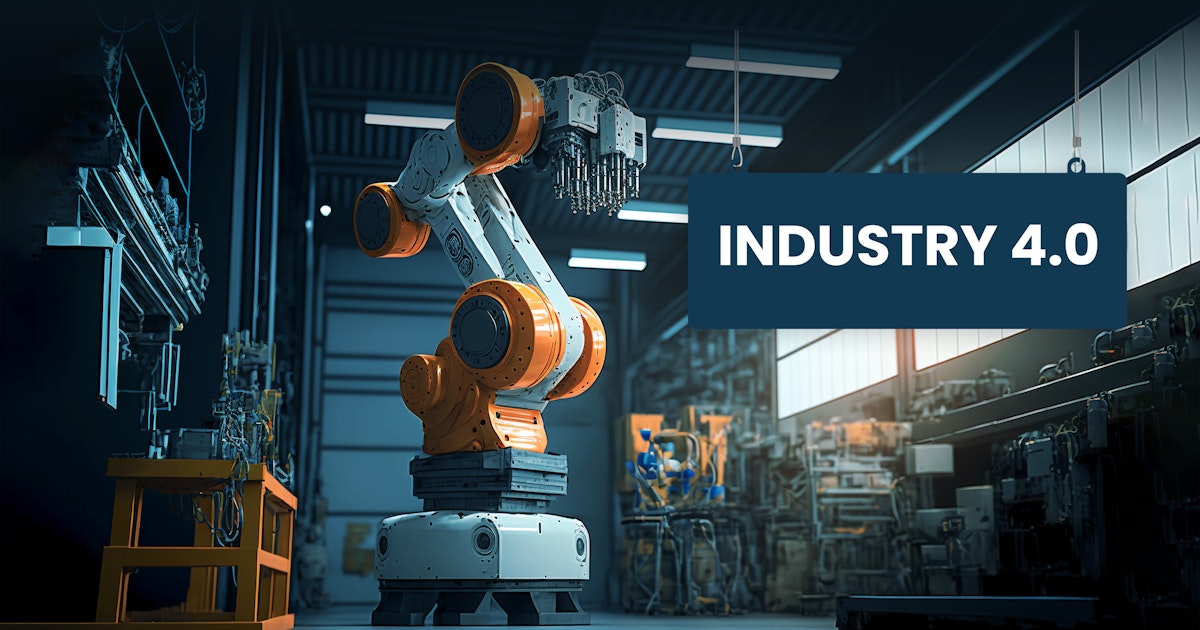Thanks to the rise of IoT, overcoming construction labor shortages has become easier. From taking increased safety measures for on-site workers and using advanced technology for better collaboration to automating labor-intensive processes and going green via eco-friendly construction technology to driving innovation with design-build teams — we are witnessing a sea of change. This article explores the trending IoT solutions in the construction industry.
Labor shortages and high costs of acquiring skilled labor have pushed the construction industry away from the traditional way of functioning. The adoption of advanced technology has revolutionized the industry and redefined construction processes significantly.
Manual labor and hand-operated tools are quickly replacing autonomous and connected equipment. Sure, coils and slabs are built by hand, and masonry is not precisely a redundant occupation. But how often do you see new buildings being constructed solely by humans?
The sound of cranes, bulldozers, and other heavyweight mechanical equipment is not uncommon in developing areas. So naturally, robotic tools and IoT solutions enable construction companies to maximize productivity and minimize risk.
The pits and lows in construction
The trend of labor shortage set in after the housing crash and recession of 2007-2009. Over five million workers became jobless and even quit the construction industry. The situation was aggravated with the onset of the global pandemic in 2020.
It continues to tighten even as the industry returns to work. The 2020 Marcum JOLTS Analysis estimates a 2.6% drop in job openings compared to the available positions. To meet the rise in demand, construction companies have shifted focus to IoT, automation, and robotics.
They are adopting cutting-edge solutions designed to meet the evolving needs of the industry to revamp, upgrade, and breathe a new life into their businesses. The new technologies include:
- Laser scanning to meet precise field measurement requirements
- Drones or Unmanned aerial systems (UASs) that help ease project planning and real-time decision-making
- 3D printing to create models and offer a tangible experience to stakeholders
- Wearables to boost worker safety at construction sites
- Robotics for automating and speeding up processes
- Cloud and SaaS to facilitate seamless communication
Get Expert IoT Solutions for Construction Labor Issues!
Contact UsTop five autonomous construction trends to watch out for
As mentioned before, we are coming off a whirlwind of a year. Come to think of it, 2021 has not been so stable either. But the above-mentioned sector continues to show signs of growth and innovation even during the darkest hours of our lifetime.
Despite the pandemic, consumers demand more options from their builders nowadays, and they have higher expectations than ever before.
Competition is rife in the market. Adding to that thought, here are five trends that are contributing to the facelift of the construction industry:
1. Increased safety measures for on-site workers
Construction processes involve high risks of injuries, and worker safety is of utmost importance. Technology adoption increases worker safety. The latest safety solutions include IoT-powered wearables, radio frequency identification (RFID) tagged uniforms, GPS integrated pants, boots, and vests. Enabled by Wi-Fi, these tools allow supervisors to track each worker and alert them in case a worker gets seriously injured on-site.
2. Using advanced technology for better collaboration
Clarity and transparency are essential elements for the success of a construction project. Therefore, construction companies integrate Building Information Modeling (BIM) to solve communication problems faced by their legacy systems.
The deployment of BIM improves the efficiency of all teams by streamlining workflow. Similarly, the Digital Twin technology helps construction firms offer clients a real-time view of the project through a digital model.
The model offers real-time updates of the project's progress. It allows all stakeholders to collaborate and suggest corrections which avoids costly rework.
3. Automation to minimize the impact of staff shortage
Construction companies are battling a shortage of skilled labor. Automation of processes helps them meet requirements. Manufacturers are integrating robotics with construction equipment to produce autonomous machinery, sensors, drones, and augmented GPS devices.
It helps handle hazardous and repetitive tasks to maximize the productivity of workers at construction sites. That way, such companies are also able to cut down overhead expenses by making a one-time investment in technology.
4. Going green via eco-friendly construction technology
New construction sites and even existing buildings consume excessive power. This energy wastage is hazardous for our environment and increases the carbon footprint of buildings.
The latest trend in the construction industry is the adoption of Green Construction Technology to control energy costs. The top Green construction technologies currently used for sustainable construction are:
- Solar power panels
- Biodegradable and sustainably sourced construction materials
- Green insulation materials
- Smart or self-sufficient appliances
- Cool roofs
- Dual plumbing for water efficiency
- Low-energy house and zero-energy building design
- Electrochromic Smart Glass
- Rammed Earth Bricks
5. Driving innovation with design-build teams
Moving away from the old ways of designing and sub-contracting for building, construction companies are now adopting the design-build methodology. It involves many progressive methods of project delivery through single-source contracting, combined with project management software.
The concept facilitates collaboration and transparency to eliminate errors and cuts down instances of rework. Design-build teams work together to deliver innovative solutions at high speed. This model reduces costs and minimizes risk.
6. The rise of construction project management software
Tracking projects on massive and complex spreadsheets is passe. However, regardless of the industry niche, using proper project management software has become the norm. The construction companies are no different either.
They need the support of technology to supervise the planning, design, and building of a project from start to finish. The right software will also handle other details like project objectives, budgeting, labor payroll, and performance requirements.
In recent years, project management has taken precedence in the industry, helping companies keep all project-related documentation in one place and be in better control of the projects as a whole.
How IoT fights against construction labor shortages
This is a tricky question to answer. However, an important point to note is that labor shortages in the global construction industry result from several misconceptions and inefficacies.
Industry experts report construction jobs are no longer valued as earlier. Millennials consider the work to be 'dirty.' Tech-savvy applicants are not interested in working for companies with opaque processes — because of the increased desire for flexibility in professional lives.
Manual-intensive procedures pose a risk to life and health, which is another reason leading to disinterest in job opportunities in the construction industry. New job applicants who are technically efficient do not enjoy working in non-technical environments.
That is where IoT solutions for the construction industry can make a huge difference. Here is a simple but effective instance. Millennials grew up alongside technology, and so they expect the same in their work. If construction companies can equip themselves with the latest tech and create advisory jobs in the process, there is a higher chance of attracting talent.
Growing popularity of Industrial IoT solutions
Industrial IoT solutions are revolutionizing the industries you cannot imagine. Construction companies, for starters, are investing in the automation of building sites to meet the rising demand of clients.
They are using autonomous and IoT-enabled equipment to speed up project delivery while maintaining cost efficiency. In addition, connected job sites offer the highest standards of safety, reducing worker stress.
Mundane and hazardous tasks can be completed by automated equipment allowing skilled labor to focus on more complex tasks. Here are a few instances of how IoT is helping overcome labor shortages in the construction industry:
1. Construction robotics transforming the fieldwork
Robots handle repetitive tasks such as bricklaying, painting, and raw-material loading to allow skilled workers to handle tasks that require more expertise. They also perform hazardous activities such as demolition to reduce job site injuries of labor.
Autonomous vehicles are also deployed on construction sites to move heavy loads for excavation and bulldozing purposes. They operate without driver assistance and help save costs and time. Smart robots with in-built image processing technology can conduct site inspections.
They are equipped with sensors such as Light Detection and Ranging (LIDAR). These help them detect any defects at the site. As a result, it saves rework costs and allows builders to take proactive corrective measures whenever necessary.
2. Cloud systems for construction sites
BIM deployment allows architects and engineers to collaborate on the same construction project from different locations. It is based on cloud computing that enables remote project management by different teams.
The system keeps designing and building teams on the same page to review and suggest corrections on the same document.
Cloud-based storage also allows them to access the necessary information on the go through mobile devices. Project complications and delays can be easily tracked and resolved by respective teams.
3. NEC envisioning IoT solutions for fieldwork
NEC suggests the adoption of IoT and augmented reality (AR) on construction sites. They recognize it as a potential technology to resolve the problem of labor shortages in the industry. Implementing IoT-connected devices improves the productivity of the workers.
Supervisors can leverage smart equipment to monitor workers and send them instructions in real time. "Wearable Remote Work Support Solutions" can increase levels of visualization on the site and enable remote monitoring.
The system also collects vital statistics of each worker to enable health management. For example, it collects biometric data such as posture, calories burnt, heart rate, and temperature to ensure employee fitness on the field.
NEC also offers image recognition technology that proactively identifies defects and ensures high-precision project delivery. Machinery equipped with this technology helps new hires and less-experienced employees to chalk out missed work steps and errors.
Facial recognition technology helps resolve the challenge of uninsured employees entering the construction premises. The system monitors and identifies employees who are not enrolled for social insurance and alerts the management.
NEC is leveraging cloud technology to store the collected data and make it available to the management remotely.
4. Enablement of smart sites
Smart equipment can help improve on-site productivity and efficiently manage labor shortages. Robots can conduct risky jobs such as lifting heavy loads, inspecting equipment installed on heights, and demolition activities.
There are dual benefits to automating such tasks. First it covers risk and ensures the safety of labor. Second, the task is performed quickly and efficiently.
Drones, image analytics, and noise detection technologies can be deployed to perform maintenance and management of sewers, pumping lines, and other machinery of the construction sites.
Real-life examples of IoT solutions in construction
Without a doubt, IoT devices and sensors in the sector are collecting and organizing job site data efficiently and affordably and helping construction companies glean insights from them for the sake of driving innovation and profitability. Here are five real-life use cases of IoT:
- RFID tags are used by Cat Detect for Personnel from Caterpillar. The personal protective equipment (PPE) used by their workers incorporates the tags to allow equipment to detect the workers. Operators are notified of the worker's presence to avoid any accidents. Their clothes are also equipped with Moisture wicking to keep a check on overheating.
- NEC has developed drones for inspecting tunnels and bridges. Their drones are fitted with hammers and noise-detection sensors. The microphones capture hammering sounds which the inspector then analyzes. Some of these drones are also equipped with cameras to facilitate closer inspection when needed.
- Trimble offers connectivity coupled with precision. They leverage technologies, such as LIDAR and GNSS, to provide machine control solutions. This enables machine-guided construction at heavy civil construction sites. The machine controls all connected heavy equipment.
- IotaComm develops predictive maintenance systems for the timely replacement of worn parts of machinery or equipment. It detects potential defects in all types of systems, from small actuators to large HVAC blower motors. The system helps construction companies save high costs and reduce the downtime of essential equipment.
- Microsoft's HoloLens allows project managers to envision projects before construction begins on the site. It will enable them to overlay the project plan in 3D on the site. They can easily identify sections to be resized or fixed.
Let's Integrate IoT to Tackle Labour Shortage Issues!
Contact UsOver to you
The time is ripe for construction companies to build and implement a digital strategy. Project Management Information Systems (PMIS) and Building Information Modeling (BIM) are opening up a world of possibilities.
Project managers can collaborate efficiently, and clients can enjoy an immersive experience of their projects. Interestingly, wherever there is demand, there is supply. If you are looking to build an IoT platform or project management software for your construction business, look no further than Intuz.
Our staff houses experts who have developed numerous solutions for your sector. Please share your requirements on our website or give us a ring at +1 650.451.1499. Speak to you soon!





